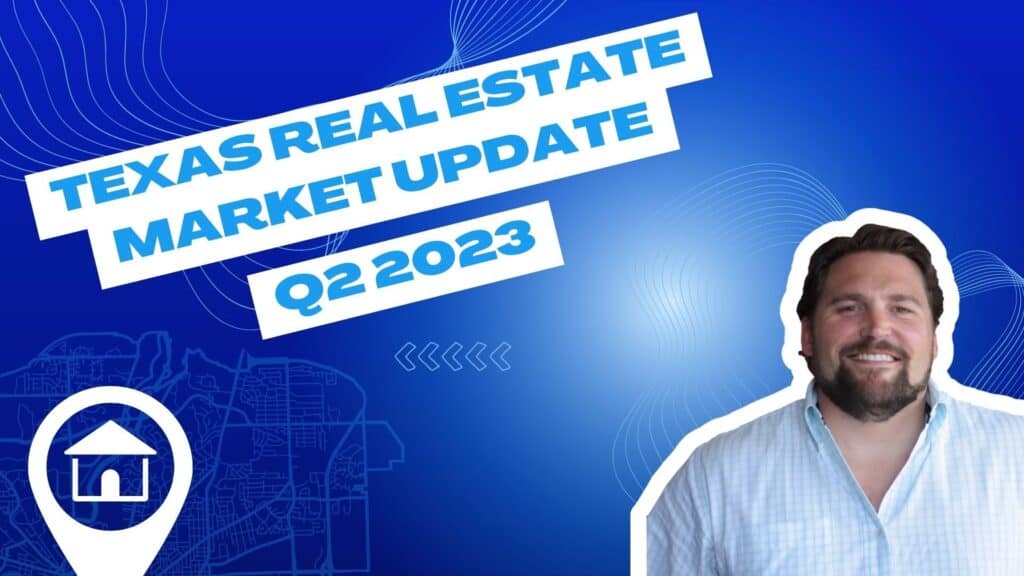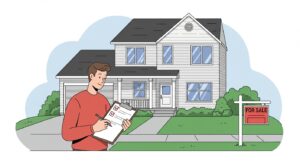
Q2 2023 Texas Real Estate Market update – Real Estate Real Fast EP21
In this episode of Real Estate Real Fast, Aaron Jistel, the co-founder of ListingSpark and an experienced real estate broker, provides a comprehensive overview of the current state of the Texas real estate market.
Focusing on major Texas metro areas like Austin, DFW, Houston, and San Antonio, Aaron discusses important trends and developments that homeowners, investors, and anyone interested in real estate should be aware of.
From changing median home prices to days on market and shifting interest rates, Aaron covers a wide range of topics and insights in this episode.
Listen to the full episode for Spring 2023 trends in the Texas Real Estate Market.
Episode Highlights
- Current state of the Texas real estate market
- Market trends in Austin, Houston, DFW, and San Antonio
- Impact of interest rates on the market
- Changes in fee structure for loans based on credit scores
- Relationship between commercial and residential real estate markets
- State of the commercial real estate market in Houston, Dallas, San Antonio, and Austin
- Potential recession and market conditions
Key Takeaways
[00:01:57] Austin housing market update for April 2023
Austin, Texas, had a decrease of 15% year over year in the median home price, reaching $466,750 dollars in April. The closed transactions last month reached 2611, a decrease of 18%. The average Days on Market in Austin spiked to 71 days, up by 53 days compared to last year.
[00:03:07 – 00:03:37] “Closed transactions for April 2023 were 2,611. That’s down 18% days on market.”
[00:04:36] Austin real estate sales volume and velocity in April 2023
Austin’s housing market in April saw a decline in new listings and sales volume, but the market remains a seller’s market. The market now experiences an average of 100 days for a house to sell, challenging sellers who are used to homes being quickly sold.
[00:06:30 – 00:06:41] “I can tell you 3.2 months supply of inventory doesn’t feel like we’re in a seller’s market, but technically, by definition, we still are.”
[00:06:54] Austin’s Real Estate Market shift
The real estate market in Austin is experiencing a shift, with prices decreasing and days on market increasing. However, a decrease in new listings is helping to stave off even higher inventory. Buyers now have more negotiating leverage, but high interest rates somewhat neutralize these benefits.
[00:07:25 – 00:07:32] “If you’re a buyer, this is the first time in probably close to a decade that you’ve had this amount of negotiating leverage.”
[00:08:06] DFW housing market update April 2023
The median home price in DFW has decreased by 4.3% year-over-year, currently at $399,900. Active listings have risen by 84%, with 2.1 months of inventory available. The days on market have also increased to 52 days, up from 30 days last year.
[00:08:08 – 00:08:16] “So the median price in DFW right now is 399,900. That’s down 4.3% year over year.”
[00:09:14] Texas housing market slows down with inventory on the rise
The Texas housing market, including Austin, Houston, DFW, and San Antonio, has experienced a slowdown in sales velocity and an increase in inventory. Texas home sellers are hesitant to list, while existing median home prices have dropped slightly. Most sales are likely occurring due to people having to move rather than trying to be opportunistic.
[00:11:55 – 00:12:05] “Market is slowing down. Velocity of home sales is slowing down, inventory is going up.”
[00:13:23] Mortgage interest rates hit 7% amid economic concerns
Mortgage interest rates hit 7%, their highest since August 2007, sparking market uncertainty. Sitting at 5.25%, the Federal Reserve interest rate indicates that a recession may be looming as the last time it was this high was right before the previous financial crisis. As a result, many are predicting the Federal Reserve will eventually lower rates.
[00:13:44 – 00:13:49] “Higher rates are not good for anybody. They’re not good for buyers, they’re not good for sellers.”
[00:17:14] Fannie Mae and Freddie Mac changing fee structure for loans
Fannie Mae and Freddie Mac have changed their fee structure for loans based on credit scores to create a more equitable environment. Lower credit scores might receive lower fees and higher credit scores could see fees go up. The changes also affect rates on vacation, second homes, and higher-value loans.
[00:18:08 – 00:18:20] “A buyer who puts a 20% down payment, if they have a credit score of 640, they might see their origination fee drop three quarters of a point with these new updates.”
[00:19:36] Commercial and residential real estate: How the markets relate
Aaron discussed the relationship between the commercial and residential real estate markets. While there are over $2 trillion worth of commercial loans held in smaller banks, potential defaults in these banks could affect the commercial property sector and eventually the residential market. As businesses expand and more office space is required, the need for housing also increases.
[00:19:54 – 00:21:03] “The risk of default at these smaller banks has a lot of potentially negative effects on the commercial real estate world that will eventually trickle down into the residential world.”
[00:21:09] Commercial office space market and increased vacancy rates
The commercial office space market is facing high vacancy rates, particularly in cities like Houston, Dallas, and San Francisco. This can lead to a decrease in income for landlords and a subsequent decrease in property values. However, the industrial sector remains stable mainly due to the high demand for warehousing and distribution centers.
[00:21:28 – 00:21:52] “Houston at 18.93% vacancy. Dallas at 17.69%. San Francisco is at 17%. I think that number in San Fran has gone way up. These numbers might be a little bit dated because I’ve heard San Francisco right now has gotten north at 30%.”
[00:24:49] Commercial real estate trends in Texas
Austin’s commercial real estate market struggles with high vacancy rates, while Dallas-Fort Worth leads the nation in commercial property investment for the third consecutive year. Houston sees a decline in leasing, but office occupancy has improved on a year-over-year basis.
[00:26:49 – 00:27:11] “Dallas Fort Worth, Austin and Miami ranked the best markets on the US Investor Intention Survey. North Texas led the nation in commercial property investment in 2022, with over $42 billion in transactions.”
[00:27:51] Looking ahead: What to expect from the real estate market moving forward
The real estate market has experienced a significant shift with increasing days on market and decreasing sales volume, particularly in Texas. Experts predict a potential recession but are hopeful for normal seasonality and a return to healthy market conditions, depending on the Federal Reserve’s actions to combat inflation.
[00:28:28 – 00:28:44] “Jerome palace constantly said they have the tools in the toolbox to cure what happens as a result of a recession. But what they don’t have tools in the toolbox for is curing runaway inflation.”
Related Posts
Digital Home Sales: How to Sell Your Home Online in 7 Steps
Selling your home no longer means you have to put up yard signs, organize open houses, or even hire a listing agent. Instead, you can learn how to sell a house online at a fraction…
Flipping a House Checklist: Steps to Sell for Maximum Profit
You got a great deal on an investment property. You spent countless hours going back and forth with contractors and subcontractors. You’ve matched and picked out paint, the perfect paint. You’ve pulled teeth to get…
7 Best Apps for Real Estate Investors in Texas
Texas homes continue to move quickly, with many properties listed for less than two months before they find a buyer. In a local market where inventory remains low and prices stay high, real estate investors…




